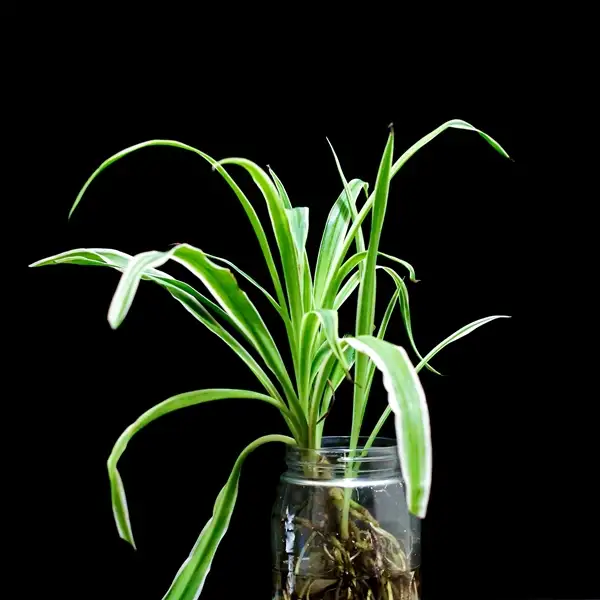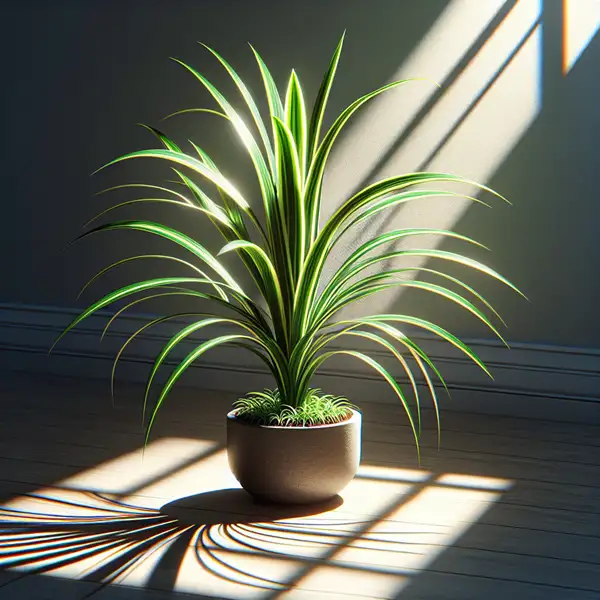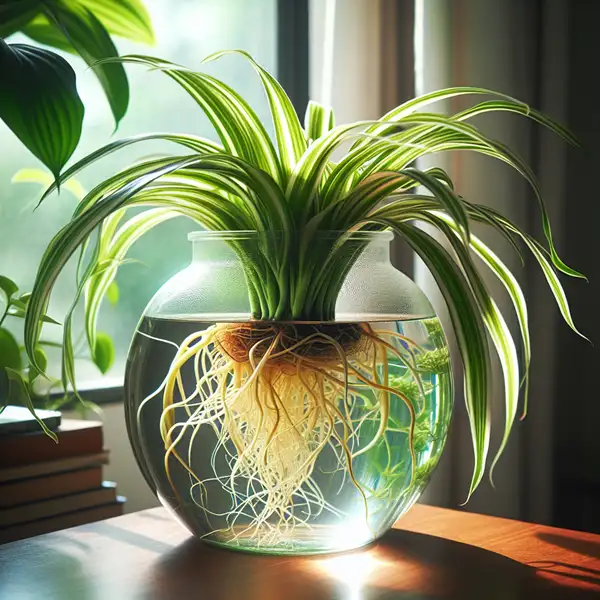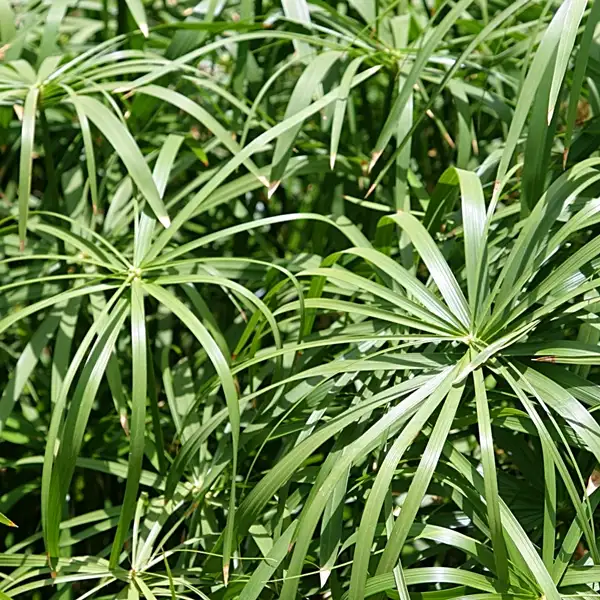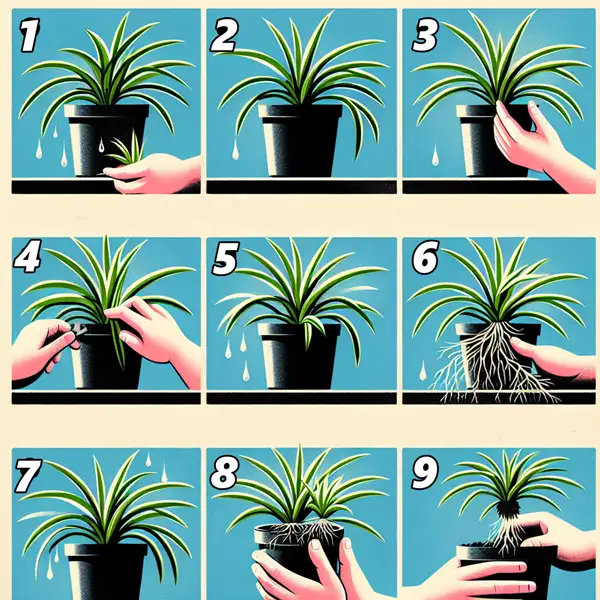Key Takeaways
| Key Takeaways | Why It Matters |
|---|---|
| Discover the hidden benefits of spider plants | What are Spider plants good for? More than just decoration – they serve an important purpose. |
| How they help in purifying indoor air | A surprising natural solution for a healthier home |
| Boosting mental well-being and productivity | Understand how this simple plant can improve your daily life |
| Enhancing your home décor effortlessly | Stylish placement ideas that elevate any space |
| Proven care tips for a thriving spider plant | Avoid common mistakes and maximize growth |
| Debunking myths and revealing interesting facts | Separate truth from fiction about spider plants |
| Are spider plants safe for pets? | Find out the real answer and potential concerns |
| Scientific research supporting their advantages | See what experts and studies have to say |
Spider Plants – Understanding Their Basics
At first, I did not think much of the spider plant I picked up from my local nursery. It seemed like just another low-maintenance plant for my home. Many people praise spider plants, and they’ve been awarded worldwide for their benefits. However, there are different stories about what they truly offer. What are spider plants good for? Today, I’ll share what I found after diving into numerous studies on spider plant benefits.
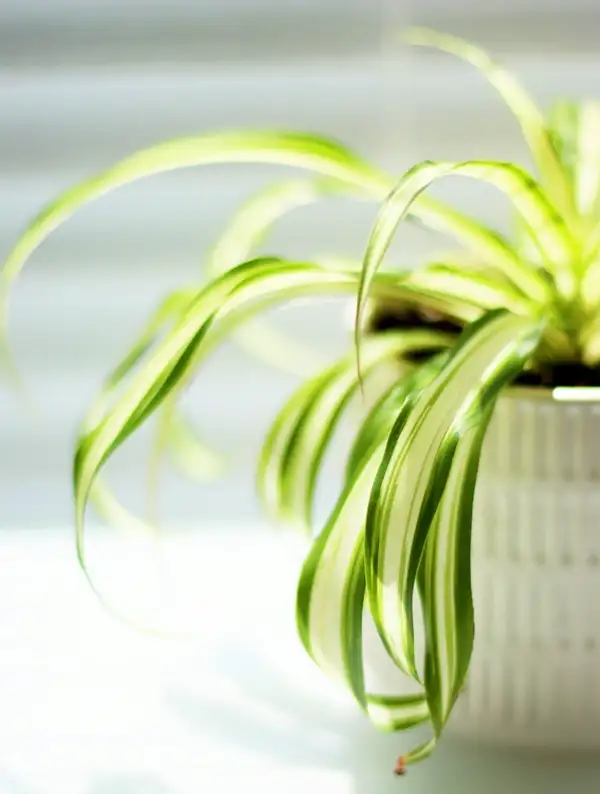
Spider plants scientifically known as Chlorophytum comosum, have long served as a common houseplant due to their easy-care nature & versatile usage. Originating from tropical & southern africa, spider plants are incredibly hardy, being able to thrive in varying conditions. These evergreen perennials are particularly distinguished by their long arching leaves that can grow up to 60cm long – making them quite ]noticeable addition to any indoor space.
One notable trait about spider plants is their adaptability with regard to light; they can survive in both well-lit areas or under shady conditions. However, for optimum growth and proper variegation – prominent stripes on the leaves – it is ideal for the plant’s location to offer indirect sunlight. Furthermore, these resilient plants also possess air-purifying ability approved by NASA!
Health Benefits of Spider Plants
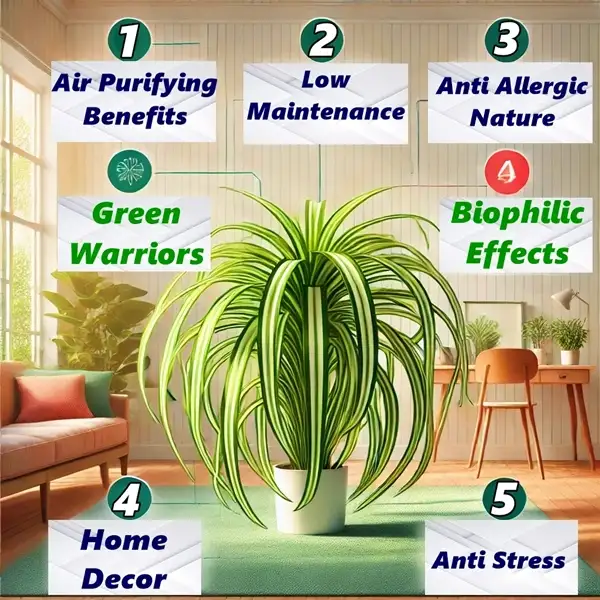
Spider plants provide several health benefits that make them an essential addition for any houseplant lover. So, let’s see what are spider plants good for in terms of improving your health and environment.?
- They have been shown in various studies like one published in the HortScience journal insinuating that this humble greenery can effectively combat indoor pollutants including volatile organic compounds like xylene and formaldehyde.
- These pollutants primarily originate from furniture material paints or cleaning products which over time may contribute negatively towards one’s physical health involving symptoms such as allergic reactions or headaches.
- To exemplify its filtration efficiency further, NASA’s Clean Air study endorsed our “green warriors” ability to eradicate up to 90% of toxins tested over a period of 24 hours – implying clean living spaces lead toward healthier lives.
Environmental Advantages of Having Spider Plants Indoors
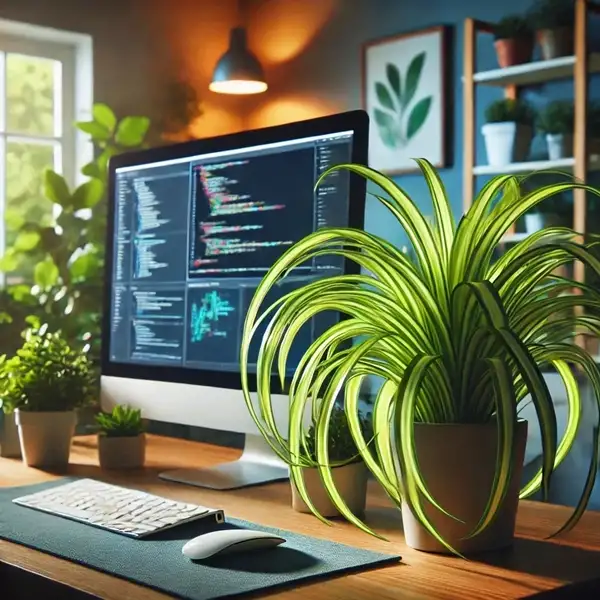
- Apart from boosting your indoor air quality, spider plants’ environmental impact extends beyond this by improving mental well-being through biophilic effects.
- Humans inherently crave a connection with nature. Introducing elements that mimic the natural environment can reduce stress, improve productivity, and increase overall satisfaction.
- An experimental study conducted by the Journal of Physiological Anthropology attributed indoor plants resulting those individuals having performed complicated computer tasks with lesser stress levels and a 12% quicker reactivity. This indeed underlines spider plants’ role beyond ornamental capacity, serving as silent performers in revamping personal environments.
Use of Spider Plants in Home Décor and Aesthetics

The dynamic structure of spider plants is a valuable asset when it comes to interior design.
- Their sprawling leaves provide an excellent cascade effect when placed on shelves or hanging from the ceiling – creating vibrant green waterfalls that instantly inject life into any room.
- Moreover, their light green foliage surrounded by white stripes creates an alluring contrast against different background colors; hence can be used strategically for visual interest within home décor strategy.
- Interior designer Kelly Hoppen once opined-
“Plants add color, texture, and depth to your space”.
- And certainly enough, spider plants live up to this expectation splendidly through both color value enhancement and suggesting a sense of welcoming warmth to their surroundings.
How To Care For Your Spider Plant for Maximum Benefit
While being fairly low-maintenance makes them popular among both beginner gardeners and busy homeowners – taking certain steps augments its benefits manifold.
| Care Aspect | Guidelines |
|---|---|
| Light |
|
| Watering |
|
| Soil |
|
| Temperature |
|
| Humidity |
|
| Fertilization |
|
| Repotting |
|
| Propagation |
|
| Pet Safety |
|
Interesting Facts and Myths About Spider Plants
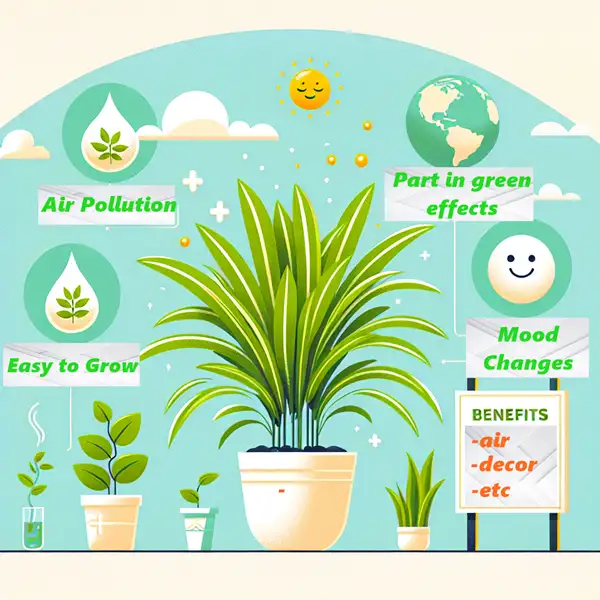
- Contrary to certain myths hovering around these resilient beauties, they pose no harm to pets. Mayo Clinic affirms despite causing slightly upset stomachs or vomiting in cats/dogs upon ingestion – they are fundamentally deemed non-toxic.
- Furthermore, mythology highlights legends that attribute spider plants with power to ward off evil & negativity or to harness prosperity.
- Interestingly, these “spideys” have earned recognition for their quiet resilience, winning Royal Horticultural Society’s Award of Garden Merit, thanks to their ornamental appeal & ease of cultivation.
Spider Plants Are Every Plant Lover’s Best Friend
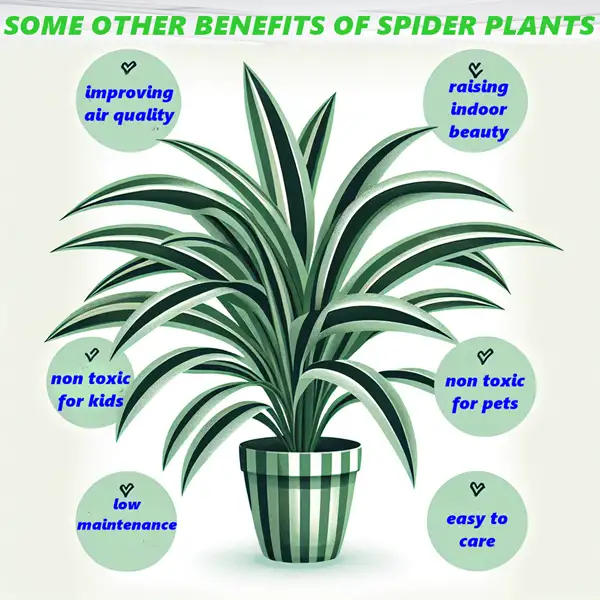
Today, we’ve explored the latest research on what are spider plants good for, covering everything from their role in home décor to their impressive air purification capabilities. We’ve also discussed how they help in removing negativity and their psychological effects on human health.
In essence, those simple yet enchanting green leaves stretching gloriously in your house corners encapsulate a world of unsuspected benefits.
Frequently Asked Questions
Is spider plant lucky inside the house?
Many believe spider plants bring good luck and ward off negativity. While not scientifically proven, their calming presence enhances well-being.
What are Spider plant medicinal uses?
While not used medicinally, spider plants contribute to better respiratory health by filtering indoor air pollutants.
What are Spider plant advantages and disadvantages?
Advantages: Purifies air, reduces stress, low maintenance. Disadvantages: Becomes leggy without pruning; overwatering can cause root rot.
What are Spider plant benefits at night?
Even at night, spider plants continue purifying air, making bedrooms healthier for better sleep.


